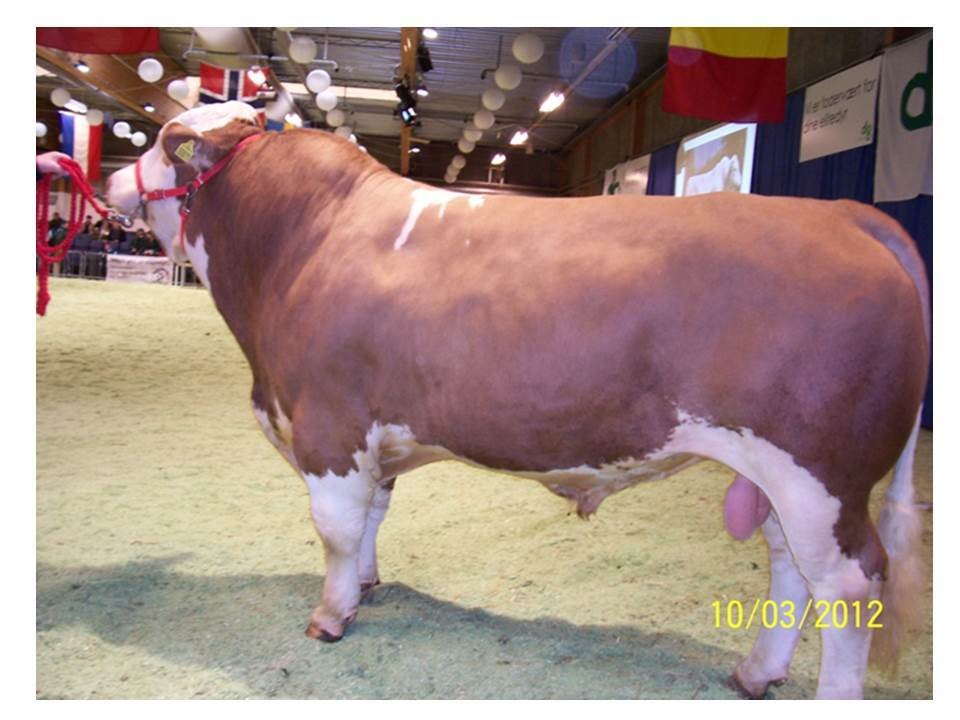In the past, this is a line that Breeder’s bringing in straws of foreign outcross bulls would often say, and understandably so. Thanks to genomics however this is no longer the case.
Introduction
An ‘Outcross Bull’ is a bull with a bloodline that has never been used here before. Such bulls bring something different to the table. Show champions or trait leaders in their own country. They inject fresh new genetics into a herd here. Given the focus on €uro-Stars however, the big question for a breeder is always what that bull’s star rating will be here?
The less information that is known about a bull’s progeny (calving ease, weights etc) the lower his reliability % will be. The problem with a very low reliability % (<10%) is that it leaves a lot of room for a bull’s index to change while he is on that journey to being a +90% reliable bull and his genetic ability being fully known. Breeder’s could shy away from then using him and bloodlines would narrow.
The technique of ‘genotyping’ an outcross bull has gone a long way to solving this problem. Genotyping is the process of determining differences in the genetic makeup of a bull by examining his DNA sequence. It will move his index up or down depending on how the DNA looks but one aspect that will always increase is his reliability%. It’s as if the bull has already sired calves in terms of what effect it has on his €uro-Stars. It prevents him from starting on the floor,
Following are 2 polled outcross Simmental bulls from the Czech Republic and Denmark that have benefitted from being genotyped.
Prima ET PP (S3250)
‘Prima ET PP’ is a fully polled Simmental bull from the Czech Republic. His only common ancestor with the Irish Population is a great grandsire ‘DFV’. So he is an outcross bull and in his home country he has good figures for growth and body conformation. He is also used in Denmark, Switzerland and Germany. As can be seen in the graphic below – his initial proof which would be based purely on the figures of his ancestors, he starts off with extremely low reliabilities of 2% & 3%.
After being genotyped his reliabilities shot up to the 30% mark, on par with a lot of young Irish bred young bulls. His Terminal index increased, in line with his good growth figures from the Czech Republic. His ‘Replacement Index’ decreased. He does’nt have foreign maternal breeding figures so genotyping is the only way of throwing light on this side of his genetics.
Holm Frede P (S3252)
‘Holm Frede P’ is a heterozygous polled Simmental bull from Denmark. Similar to ‘Prima PP’ his only common ancestor with the Irish Population is a great grandsire ‘S327’. He had a yearling weight of 783kg but also started off with extremely low reliabilities of 4% & 5%. After being genotyped his reliabilities also increased to over 30%. He went from a 4 to a 5 star bull for ‘Replacement Index’ and his ‘Terminal Index’ also increased.
Summary
It is always worth remembering that an ‘outcross’ bull is exactly that – it’s genes are outside the native population and that bloodline has never been used here before so it will always be a challenge to get a handle on their genetics due to this fact.
Some outcross bulls are even an unknown quantity in their own country of origin where the recording of data and genotyping either doesn’t exist or is at a very low level. So genotyping, in such cases is the only way we can gauge the breeding merit of a bull before he is used here.
Bloodlines narrowing in a breed has always been an issue in beef pedigree breeding. Before stars and the BDGP came along certain bloodlines were always more popular than others with certain influential sires having numerous sons in AI as well as being behind many bull mothers.
However ICBF has made great progress in incorporating figures from foreign countries into a bull’s €uro-Stars here and in 10-15 year’s time the transfer of breeding figures and genotypes will be a far more streamlined and routine process.
The BDGP scheme has genotyping at its core and as has been shown above it is great news for Irish Beef pedigree breeders that the Industry here has genotyping so widely available as it gives the outcross bull a great chance of being used by a pedigree breeder here and in doing so prevent our bloodlines from getting narrow.
All of the data used in this article is freely available on the ICBF website. Enter an animal’s tag number into the ‘Animal Search’ and then click on the tabs to find out more about how an animal’s index is calculated.






